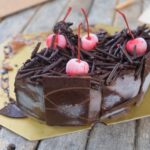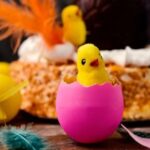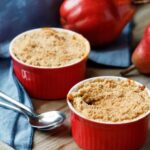Artificial flowers have become increasingly popular as a versatile and stunning option for cake decorations. Rather than relying solely on real flowers that may wilt and wither, many bakers and cake decorators are turning to artificial blooms to enhance their creations.
Not only are artificial flowers long-lasting, but they also offer the freedom to customize colors and styles to perfectly match any cake design. In this article, we will delve into the benefits of using artificial flowers in cake decorating and address any concerns or misconceptions that may arise.
One of the main advantages of using artificial flowers on cakes is their durability. Unlike real blossoms, which may wilt or droop soon after being placed on the cake, artificial flowers can retain their shape and vibrant color for much longer. This makes them an ideal choice for occasions where cakes need to be prepared ahead of time or displayed for an extended period.
Additionally, by opting for artificial flowers, decorators can have complete control over the colors and styles they wish to incorporate into their designs. Whether it’s matching a specific color scheme or creating unique floral arrangements, the versatility of artificial flowers opens up endless possibilities.
While some may have concerns about using non-edible items like artificial flowers on cakes, it’s essential to distinguish between food-safe options and those not suitable for consumption. In the following sections, we will explore how to choose food-safe artificial flowers specifically made for contact with food and recommend reputable sources or brands for purchasing these items.
Additionally, we will provide step-by-step instructions on preparing artificial flowers for cake decoration, including important cleaning techniques that ensure hygiene without compromising aesthetics.
By embracing the use of artificial flowers in cake decoration, you can elevate your creations to extraordinary levels while enjoying numerous practical benefits. With their longevity, customizable options, and wide range of types available today, these faux blossoms offer an exciting and visually stunning alternative to traditional cake decorations.
In the sections that follow, we will guide you through the process of choosing safe artificial flowers, preparing them for cake decoration, exploring various types suitable for cakes, applying them securely, and even maintaining and storing the finished product. Prepare to be inspired as we delve into the world of artificial flower cake decorations.
Safety First
When it comes to decorating a cake with artificial flowers, ensuring the safety of the decorations is of utmost importance. While many artificial flowers are not intended for food contact, there are specific options available that are safe to use on cakes. Follow these tips to choose food-safe artificial flowers for your cake decoration needs.
- Look for Artificial Flowers Made for Food Contact: When purchasing artificial flowers, make sure they are specifically labeled as being suitable for food contact. These flowers are designed with materials that are safe to come into contact with edible items.
- Check for FDA-Approved Materials: The United States Food and Drug Administration (FDA) approval is an important indicator of safety. Look for artificial flowers that explicitly state they are made from FDA-approved materials.
- Ensure Non-Toxic Dyes: Artificial flowers may be dyed to match different colors or styles. It is crucial to confirm that the dyes used on the flowers are non-toxic and safe for use on cakes.
To guarantee the quality and safety of your artificial flowers, it is recommended to purchase them from reputable sources or brands known for their commitment to producing food-safe products. A simple online search should provide you with a list of reliable suppliers.
Remember, using non-food-safe artificial flowers can potentially contaminate your cake and pose health risks. By taking precautions and selecting the right kind of artificial flowers, you can ensure a worry-free decorative experience without compromising safety standards.
Preparing Your Artificial Flowers for Cake Decoration
When using artificial flowers to decorate cakes, it is crucial to ensure that they are adequately prepared before applying them to the cake. Thoroughly cleaning and sanitizing the artificial flowers should be your first step to maintain food safety standards. By following these step-by-step instructions, you can ensure that your artificial flowers are ready to be used as beautiful decorations:
- Soak in warm soapy water: Fill a bowl with warm water and add a small amount of mild dish soap. Gently place the artificial flowers in the soapy water and let them soak for a few minutes. This will help remove any dust or debris from the flowers.
- Rinse well: After soaking, take each flower out of the soapy water and rinse thoroughly under running water. Ensure that all soap residue is removed from both the petals and stems.
- Air dry: Once rinsed, place the artificial flowers on a clean towel or paper towel to air dry completely. Make sure there is no excess moisture left on the flowers before using them on your cake.
In addition to cleaning, there are various techniques you can use to enhance the appearance of your artificial flowers for cake decoration. For instance, you can spritz them with food-safe coloring sprays to achieve vibrant colors or sprinkle them with edible glitters for added sparkle. These additional steps will elevate the overall look of your cake decorations and make them even more visually appealing.
By taking these cleaning and enhancement steps, you can prepare your artificial flowers for safe and stunning cake decorations. Remember to always follow proper food safety guidelines when working with any decorative elements that come into contact with food.
Types of Artificial Flowers Suitable for Cake Decoration
When it comes to decorating cakes with artificial flowers, there are several types of flowers that are commonly used. Each type has its own unique characteristics and qualities that make it suitable for cake decoration. It’s important to choose the right type of artificial flowers based on the desired look and style of the cake. Here are some popular types of artificial flowers that are suitable for cake decoration:
- Silk Flowers: Silk flowers are a popular choice for cake decoration due to their realistic appearance and soft texture. They can be easily shaped and arranged, allowing for versatility in design. Silk flowers come in a wide variety of colors and styles, making it easy to find the perfect match for any cake.
- Fabric Flowers: Fabric flowers are another option for cake decoration. They are typically made from materials such as satin, organza, or chiffon, giving them a soft and delicate look. Fabric flowers can be dyed to match specific color schemes, allowing for customization. These flowers can be sewn or glued onto the cake using edible glue.
- Gum Paste Flowers: Gum paste flowers are edible decorations that are made from a pliable sugar dough called gum paste. They can be molded into various shapes and designs, providing a more realistic appearance compared to other types of artificial flowers. Gum paste flowers can be colored using food coloring gels or dusts to create vibrant and lifelike blooms.
Each type of artificial flower has its own advantages and considerations when it comes to cake decoration. Silk flowers offer a realistic look and feel, while fabric flowers provide a soft and delicate touch. Gum paste flowers allow for intricate detailing and can be consumed along with the cake. It’s important to consider factors such as durability, flexibility, and overall aesthetic when choosing the right type of artificial flower for your cake.
| Type of Artificial Flower | Advantages | Considerations |
|---|---|---|
| Silk Flowers | – Realistic appearance and texture
| – Can be damaged if not handled carefully
|
| Fabric Flowers | – Soft and delicate look
| – May not be as durable as other types of flowers
|
| Gum Paste Flowers | – Realistic and detailed appearance
| – Requires skill in shaping and molding
|
Applying Artificial Flowers to Cakes
When it comes to decorating cakes with artificial flowers, there are various techniques and tips to ensure a successful and visually appealing result. In this section, we will explore different methods for attaching artificial flowers to cakes, offer tips for achieving a secure attachment without damaging the cake’s surface, and provide suggestions for arranging and spacing the flowers to create beautiful designs.
Methods for Attaching Artificial Flowers
One commonly used method for attaching artificial flowers to cakes is using floral wires. To do this, simply insert a thin floral wire into the stem of the flower, making sure it is secure but not visible. Carefully place the wired flower onto the cake, gently pushing the wire through the frosting or fondant until it reaches the cake board. This method works well for larger flowers or arrangements.
Another option is using toothpicks as an attachment method. Insert a toothpick into the bottom of each artificial flower and then push it into the cake at your desired location. This method is suitable for smaller flowers or individual blooms that you want to scatter across the cake.
If you prefer not to have any visible attachments, you can use edible glue instead. Apply a small amount of edible glue onto the back of each flower with a food-safe brush and press firmly onto the cake surface. Edible glue provides a discreet and secure attachment while keeping your cake looking flawless.
Tips on Achieving Secure Attachment
To ensure that your artificial flowers stay securely attached throughout your event without damaging your cake’s surface, there are some essential tips to keep in mind:
- Use proper support: Prioritize inserting wired or toothpick-attached artificial flowers into more stable areas of your cake, such as near dowel rods or at locations where extra support has been added.
- Avoid direct contact with moisture: Artificial flowers are not meant to come into direct contact with moisture, so it is important to avoid placing them near wet or moist components of your cake, such as fillings or fresh fruit.
- Test for stability: Before adding the flowers to your cake, give them a gentle tug to ensure they are securely attached. Make any necessary adjustments to strengthen their connection.
- Consider transportation: If you need to transport a cake decorated with artificial flowers, take extra precautions by securing the arrangement with additional supports and ensuring the cake is stable during transit.
Arranging and Spacing Artificial Flowers
Arranging and spacing artificial flowers on your cake can greatly impact its overall aesthetic. Here are some tips to help you create visually appealing designs:
- Create focal points: Consider placing larger or more vibrant artificial flowers in key areas of the cake to create focal points that draw attention. This can be particularly effective for tiered cakes or those with multiple layers.
- Balance sizes and colors: Ensure a balanced look by mixing different sizes, shapes, and colors of artificial flowers throughout the design. This will add depth and visual interest to your cake.
- Space evenly: When arranging multiple artificial flowers on a single tier or across the entire cake, aim for even spacing between each flower. This helps maintain a cohesive and well-balanced appearance.
By following these techniques and tips, you can confidently apply artificial flowers to cakes while achieving professional-looking results. Experiment with different attachment methods, arrangements, and spacing techniques to unleash your creativity and elevate your cake decorations with stunning floral designs.
Creative Cake Designs Using Artificial Flowers
Artificial flowers offer endless possibilities for creating stunning and creative cake designs. Whether you’re looking to add a touch of elegance to a wedding cake or incorporate whimsy into a birthday cake, there are various ways to use artificial flowers as decorative elements. In this section, we will explore inspirational cake designs and provide tips on selecting the right artificial flowers for different themes and color schemes.
One popular way to incorporate artificial flowers is by creating cascading flower arrangements. These can be achieved by placing larger blooms at the top of the cake and allowing smaller blooms or vines to gracefully cascade down the sides. This technique works particularly well for elegant wedding cakes, where a romantic and luxurious look is desired. Imagine delicate white roses mixed with green leaves cascading down a multi-tiered cake – it’s sure to make a statement.
For those who prefer a more understated approach, floral wreaths can be an excellent option. A floral wreath can be placed around the base of each tier or used as a centerpiece on top of the cake. This design choice adds charm and sophistication to any occasion and works well with both round and square cakes. Choose smaller blooms in similar or contrasting colors to create a visually balanced wreath that complements your overall theme.
If you’re looking for delicate floral embellishments, consider adding small clusters of artificial flowers strategically placed on the cake. These clusters could be clustered together as focal points or scattered throughout the design for added interest. For example, you could use edible glue to attach small gum paste flowers onto fondant-covered cupcakes for an elegant touch. Mixing in edible pearls or dusting with colorful edible glitters can further enhance these tiny floral details.
When selecting artificial flowers for your creative cake designs, it’s essential to choose blooms that complement your chosen color scheme and overall theme. Consider using bold and vibrant colors for whimsical birthday cakes or softer pastel hues for more romantic occasions like baby showers or garden parties. Be sure to select artificial flowers that are food-safe and made from non-toxic materials, so they can be safely enjoyed by your guests.
By exploring different cake designs and experimenting with various artificial flower arrangements, you can truly elevate your cake decorations. Remember to have fun and let your creativity run wild – the possibilities are endless when it comes to using artificial flowers on cakes.
Maintenance and Storage of Cakes Decorated with Artificial Flowers
Proper Storage to Maintain Freshness and Appearance
One of the advantages of using artificial flowers to decorate cakes is that they can stay fresh-looking for an extended period. However, it is still crucial to store the cake properly to maintain both the taste and appearance. To keep your cake fresh, it is recommended to store it in a cool, dry place away from direct sunlight or excessive heat.
If the cake is frosted with buttercream or whipped cream, it is best stored in the refrigerator. But before refrigerating, take precautions to prevent condensation from forming on the cake’s surface. Place the decorated cake in a cardboard box and cover it with a clean cloth or plastic wrap before placing it in the fridge. This will help preserve both the cake texture and the artificial flowers.
However, if your cake has fondant decorations, refrigeration may not be necessary as long as you follow proper storage techniques. Simply store the fondant-decorated cake in a cool room away from heat sources. Be mindful of any perishable fillings within the cake that may require refrigeration.
Preserving Artificial Flowers for Future Use
Artificial flowers used on cakes can often be re-purposed for other decorations or future baked creations. To preserve them for future use, follow these simple steps:
- Gently detach the artificial flowers from the cake by carefully removing any adhesive or wiring used to secure them.
- Clean each flower thoroughly using mild soap and warm water. Rinse off any soap residue and pat them dry with a clean towel.
- Store your artificial flowers in airtight containers or zip-lock bags to protect them from dust and moisture. Consider placing some silica gel packets inside the container to absorb excess humidity.
- Keep your preserved artificial flowers in a cool, dry place away from direct sunlight until you are ready to use them again.
Safely Removing the Artificial Flowers
Before consuming a cake decorated with artificial flowers, it is essential to remove them safely. Depending on how the flowers were attached to the cake, there are several methods you can use:
- If floral wires or toothpicks were used, carefully remove them by gently pulling them out. Take caution not to damage the cake or any remaining decorations.
- If edible glue or gel was used for attachment, simply detach the artificial flowers by gently twisting and lifting them off.
Remember to discard any parts of the artificial flowers that may have come into contact with non-food-safe materials or adhesive. It is always better to be cautious when consuming decorative elements on cakes.
By properly storing and preserving your cakes decorated with artificial flowers, you can extend their lifespan while ensuring they remain beautiful and safe for future use.
Conclusion
In conclusion, using artificial flowers to decorate cakes offers numerous advantages and opens up a world of creative possibilities. The popularity of this trend is on the rise as more cake decorators discover the benefits of using artificial flowers. Not only do they eliminate concerns about wilting or fragile flowers, but they also provide longer-lasting decorations that can be customized to match any color or style.
When incorporating artificial flowers into cake designs, it is crucial to prioritize food safety. Selecting food-safe artificial flowers made from FDA-approved materials and non-toxic dyes is essential. By purchasing from reputable sources or brands, decorators can ensure that their creations are safe for consumption.
Proper preparation of the artificial flowers is key to achieving a successful cake decoration. Thoroughly cleaning and sanitizing them before use is crucial. This can be done by soaking them in warm soapy water and rinsing them well. Additionally, decorators can enhance the appearance of the flowers by using edible glitters or spritzing them with food-safe coloring sprays.
There are various types of artificial flowers suitable for cake decoration, each with their own pros and cons. Silk, fabric, and gum paste flowers all offer different levels of durability, flexibility, and realism. Choosing the right type depends on the desired aesthetic and cake style.
To attach artificial flowers to cakes securely without damaging the surface, decorators can utilize methods such as floral wires, toothpicks, or edible glue. These techniques allow for customizable arrangement and spacing options to create visually appealing designs.
Artificial flower decorations allow for endless creativity when it comes to cake design. They can be used in cascading arrangements, floral wreaths, or delicate embellishments that complement different themes or color schemes. The possibilities are truly limitless.
It is important to properly store cakes decorated with artificial flowers to maintain their freshness and appearance. Artificial flowers can be preserved for future use or re-purposed creatively in other projects if stored correctly.
Frequently Asked Questions
Should you put fresh or fake flowers on a cake?
When it comes to choosing flowers for a cake, it is generally recommended to use fresh flowers instead of fake ones. Fresh flowers are considered safer as long as they are properly prepared and used correctly.
They can provide a beautiful and natural touch to the cake, adding color and fragrance. However, it’s essential to ensure that the flowers are non-toxic and have not been sprayed with harmful chemicals.
How do you disinfect fake flowers for a cake?
If you intend to use fake flowers on a cake, it is crucial to disinfect them properly beforehand. Start by removing any dust or debris from the petals and stems using a soft brush or cloth. Then, create a mixture of warm water and mild dish soap.
Gently wash each flower in this soapy solution, ensuring you thoroughly clean all surfaces. Rinse them under running water to remove any soap residue. To disinfect further, you can immerse the flowers in a bowl of water mixed with a small amount of vinegar for approximately 10 minutes before rinsing again.
What type of flowers are safe to put on a cake?
When selecting flowers to decorate a cake, it is important to choose varieties that are safe for consumption. Some common edible flowers suitable for cakes include roses, violets, lavender, pansies, marigolds, chamomile, calendula, and certain types of daisies. Always make sure the flowers you choose have not been treated with pesticides or other harmful substances.
It is advisable to purchase these flowers from reputable sources or grow them yourself organically if possible. Remember that even edible flowers need proper preparation before adding them to a cake and should be used sparingly as decorative accents rather than major components of the dessert.

Welcome to my blog about home and family. This blog is a place where I will share my thoughts, ideas, and experiences related to these important topics. I am a stay-at-home mom with two young children. I hope you enjoy reading it! and may find some helpful tips and ideas that will make your home and family life even better!





